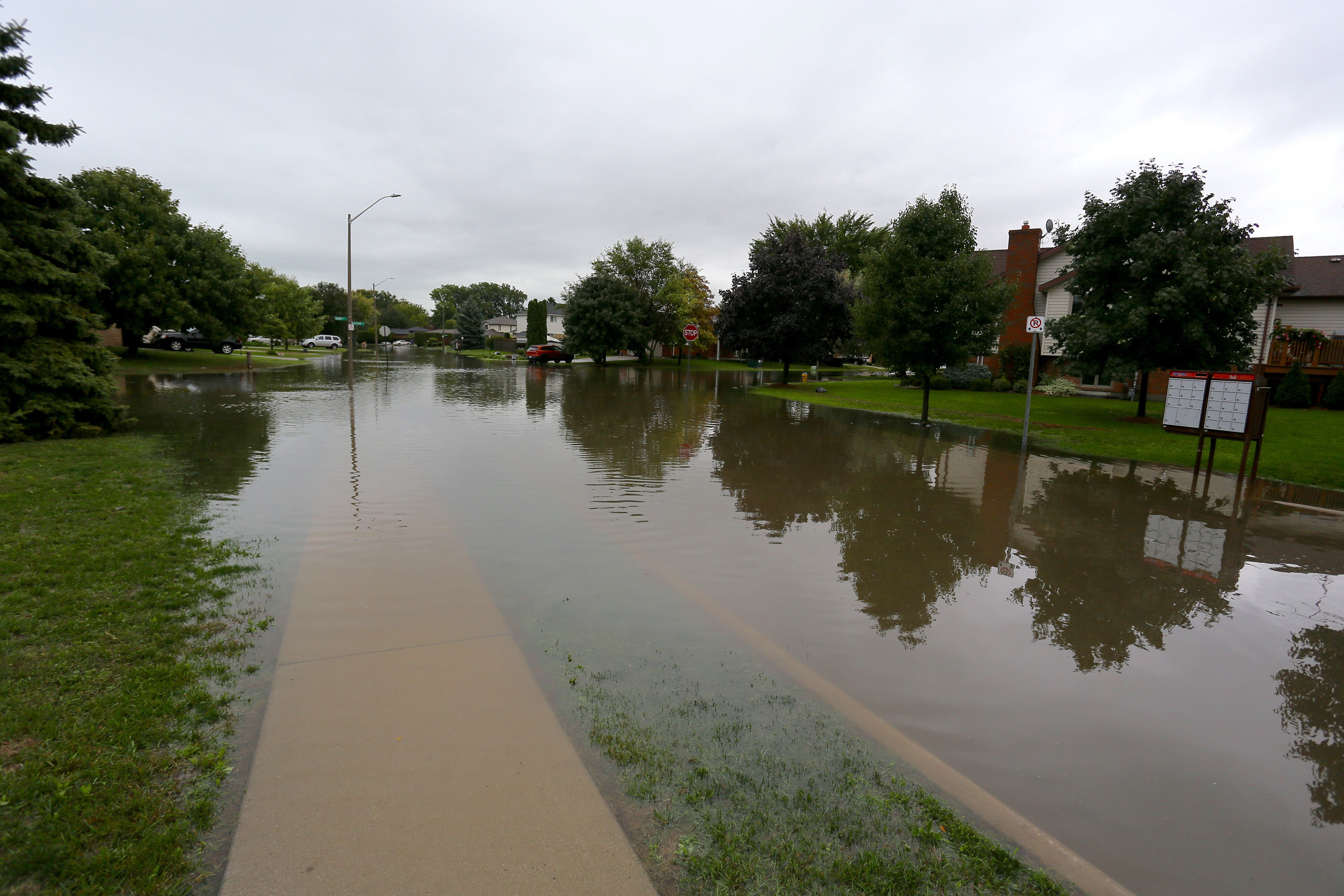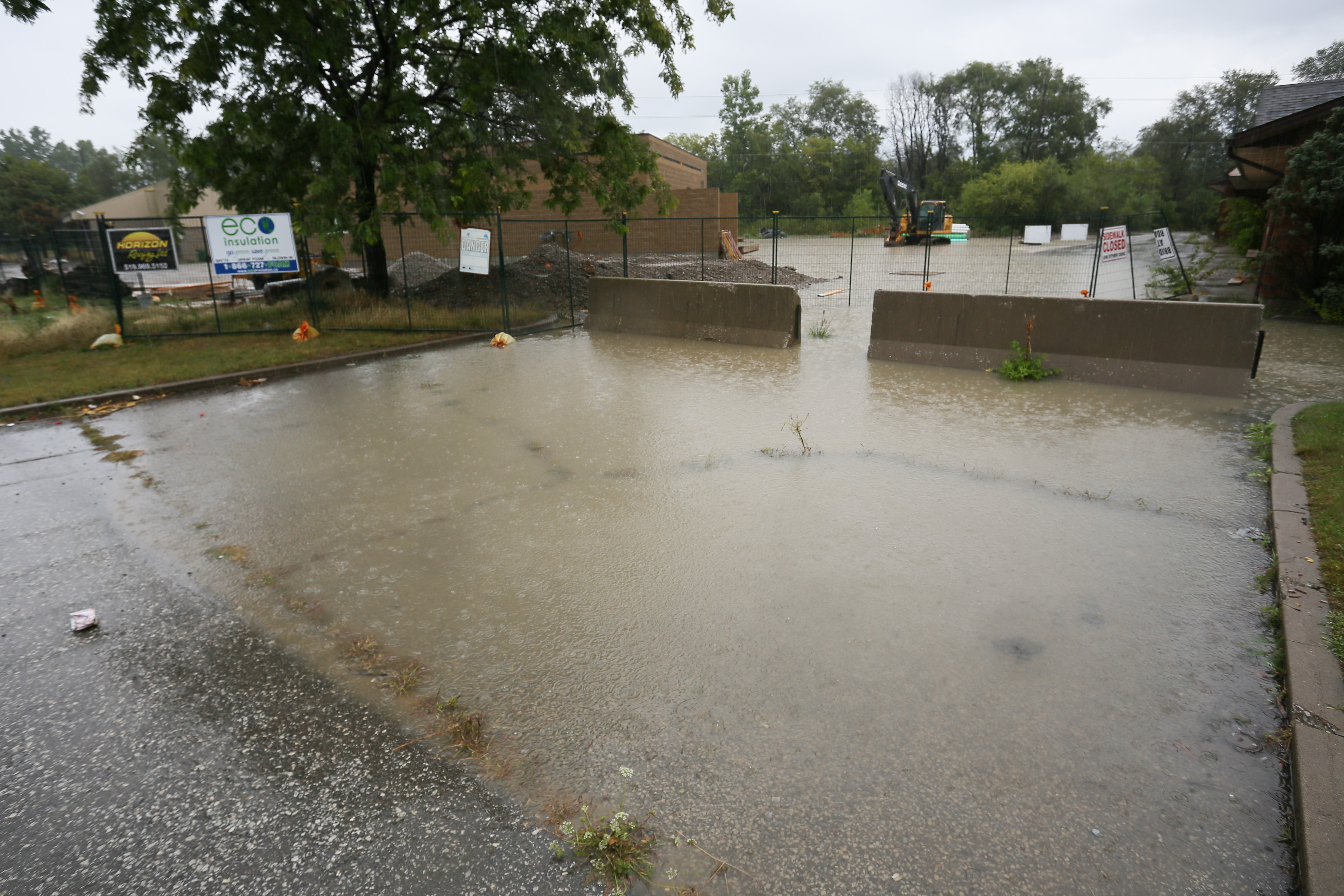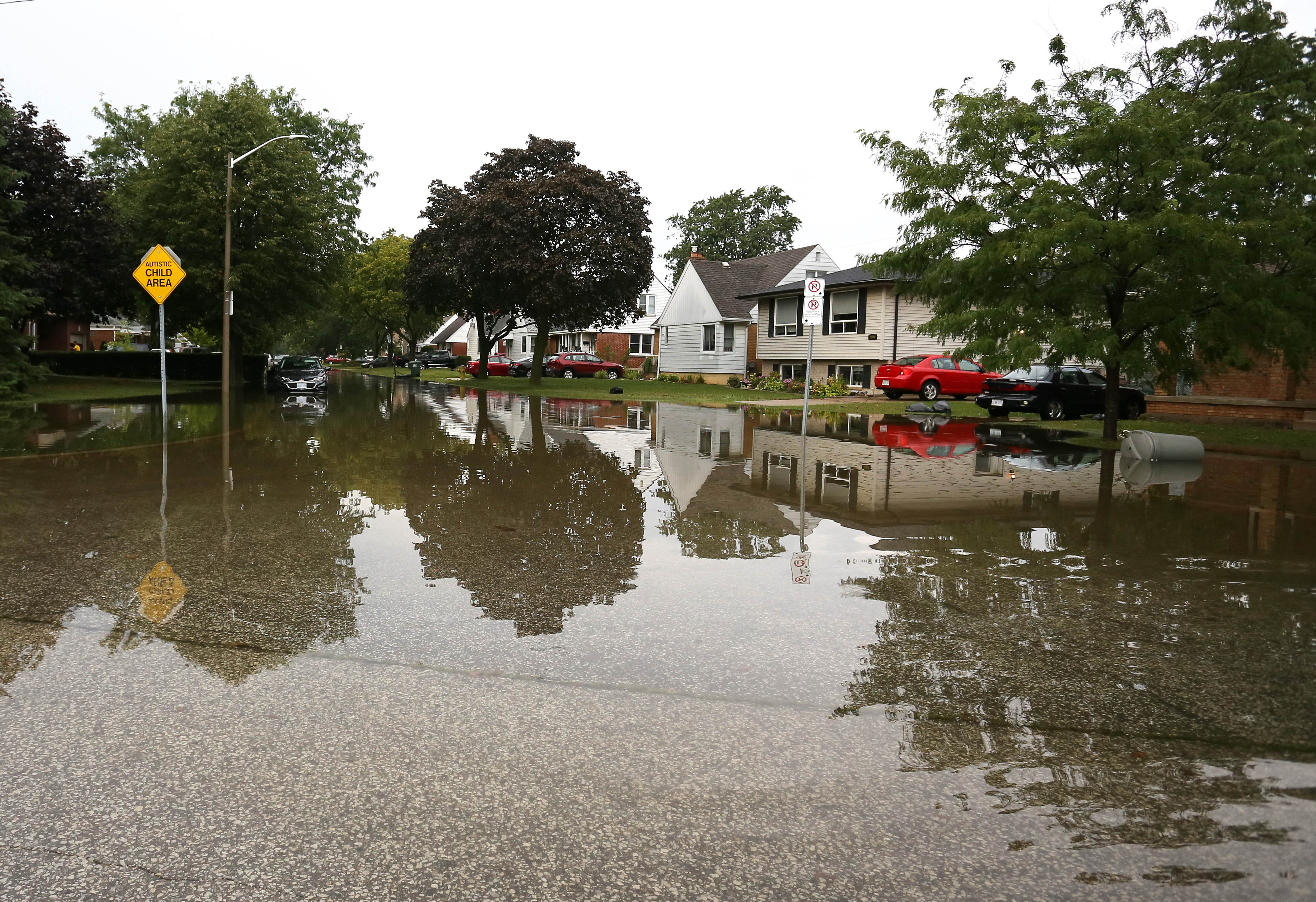After a summer marked by heavy rains and flooding across much of Canada, the Windsor-Essex region has emerged relatively unscathed. While other areas experienced record-breaking downpours, Windsor’s rainfall remained slightly above normal, avoiding a repeat of the catastrophic flooding that hit the area last August.
Despite the overall dryness, Environment Canada issued a warning for potentially heavy rain between 8 p.m. Friday and 8 p.m. Sunday. “Locally heavy rain is possible as a moisture-laden system approaches,” Environment Canada said. “This pattern can bring significant rainfall amounts, high rainfall rates and thunderstorms.”
However, the rain is expected to be short-lived, with the forecast predicting mainly sunny skies for the next seven days. This comes as a relief to residents who still vividly remember the devastating flooding that ravaged the region last year.
Last Year’s Great Flood
Last August, parts of Essex County, including Harrow, received 321 mm of rain, with 214 mm falling in a two-day period starting on Aug. 23, flooding hundreds of houses. This torrential rainfall was among the wettest couple of days in Canadian history, causing unprecedented damage and leaving a lasting impact on the community.
A Wet July, But Not for Windsor
David Phillips, Environment and Climate Change Canada’s Senior Climatologist, said Friday that while London had its wettest July in history, this year, rainfall in Windsor was slightly above normal, with 103 millimeters as opposed to an expected 89 mm. This is a stark contrast to London, which experienced 210 mm of rain in July, surpassing the record by more than five millimeters.
Hurricane Beryl and the Urban Flood
London’s deluge was primarily attributed to Hurricane Beryl, which missed the Windsor-Essex region but brought massive rainstorms to central and eastern Ontario. Videos on social media showcased the severity of the situation, showing water pouring through Toronto’s streets and flooding Union Station.
Phillips attributed this trend to the “urban flood,” a phenomenon caused by increased urbanization and the resulting lack of natural areas for runoff. This puts a significant strain on sewer systems, leading to localized flooding in urban areas.
A Warmer Climate, A Wetter Atmosphere
While there isn’t a discernible trend towards more precipitation overall, Phillips explained that climate change has intensified the severity of storms. He attributed this to rising temperatures, which cause the atmosphere to hold more moisture.
“The average temperature in Windsor is about 2C higher now than it was in the 1950s,” said Phillips. “And every 1C increase in temperature causes the atmosphere to hold up to 12 per cent more moisture. So those garden variety thunderstorms can hold perhaps 20 per cent more moisture and more precipitation and that can often be the straw that broke the camel’s back.”
Aging Infrastructure Struggles to Cope
Aging drainage systems, already taxed by urbanization, struggle to cope with the sudden influx of water from intense storms, leading to localized flooding and overwhelmed sewer systems. Phillips warned about the dangers of neglecting infrastructure, stating, “I think a new great tragedy of Ontario is the fact that we’ve got rid of those things that protected us in the past.”
A Look Ahead: More Severe Storms, More Flooding
While Windsor has dodged a bullet this summer, experts warn that the region is still vulnerable to the increasingly unpredictable weather patterns caused by climate change. The future holds a greater likelihood of severe storms and localized flooding, emphasizing the need for robust infrastructure and proactive measures to mitigate the risks.
A Time for Action
As the effects of climate change become increasingly apparent, the need for action becomes ever more urgent. We must invest in resilient infrastructure, implement sustainable practices, and adapt to the changing landscape to protect our communities from the devastating consequences of extreme weather events. Only by working together can we build a future that is prepared for the challenges ahead.

















